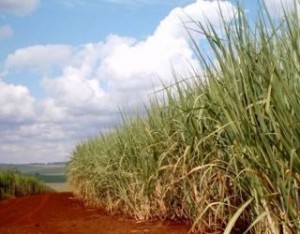Carbon-Positive Polyair Packaging Absorbs CO2
 Innovative new packaging capable of absorbing carbon dioxide emissions and being recycled post-consumer use has been re-launched in the UK.
Innovative new packaging capable of absorbing carbon dioxide emissions and being recycled post-consumer use has been re-launched in the UK.
The brainchild of Polythene UK, the ‘Polyair’ packaging material is derived from sugarcane and photosynthesises CO2 into oxygen.
According to company representatives, a single tonne of Polyair can pull 2.5 tonnes of carbon dioxide from the atmosphere. In company literature, they say Polyair is ‘the only 100% recyclable, carbon-positive material currently available’ and ‘the greenest material we know of’.
They add that: ‘Using a bio-based material at a percentage of 60% in film reduces the CO2 emissions to 0%, even when you take into consideration the energy used for manufacturing and shipping’.
CO2-Absorbent Packaging
In the natural world, sugarcane inherently absorbs carbon dioxide as it grows. It’s this quality that makes the CO2-absorbent Polyair packaging ‘carbon-positive’.
Polyair first emerged in 2009 as an oxy-degradable polythene but, quickly, its degrading qualities were observed, specifically its two-to-three-year lifetime. Therefore, the oxy-degradable packaging project was dropped and, in 2011, a new sugarcane development programme was introduced.
Polythene UK states that Polyair is a viable standard polythene replacement in bags, films, wraps, covers and more and, in comparison, represents a substantially greener alternative.
Polyair: Carbon-Positive Polythene
“Polyair carbon-positive polythene is the quickest marketing tool/door opener we have ever had”, Polythene UK’s Managing Director, James Woollard, told Packaging International, adding: “The UK is ready and listening to ways of making their packaging green and this is the greenest option ever.”
Other sugar-themed packaging innovations recently covered by Packaging International include Nestlé’s bioplastic caps and biodegradable disposable food containers, developed in the US.
Just last week, data released by the Climate Change Committee confirmed that UK CO2 emissions were on the ascent. Domestic efforts made to limit them were being offset by so-called ‘imported’ CO2 emissions related to goods imports, it said.

































